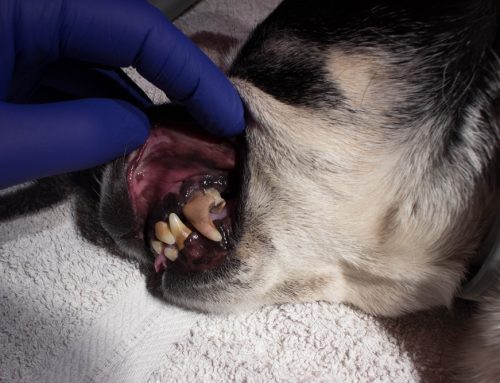Most of us know how important regular tooth brushing, flossing, and visiting the dentist is for ourselves and our families. We regularly have our teeth cleaned and enjoy the feeling of a clean mouth. What if we told you it’s no different for our pets?
85% of dogs and cats will have some form of dental disease by the time they reach 3 years of age. Periodontal disease happens when plaque and bacteria form on the teeth, causing inflammation of the gums. Without intervention, the bacteria then work their way under the gum line and destroy the supporting tissues around the tooth, resulting in tooth loss.
Periodontal disease is progressive and painful for your pet. Luckily, it’s also preventable. Let Town & Country Animal Hospital show you how.
The Basics Of Dental Health
The first step to good dental health for your pet is regular dental exams, as a part of her annual preventive care exam We need to evaluate your pet’s mouth and teeth, even if she is seemingly well. Most pet owners aren’t looking inside their pet’s mouths, so having us check for plaque, tartar, and loose teeth is important.
Professional dental cleanings are recommended periodically for most pets. It’s the only way to remove tartar and plaque from below the gum line, and to protect your pet’s health. Because we need your pet’s full cooperation for this, general anesthesia is required.
Although there’s always a risk with anesthesia, it’s now safer than ever thanks to advanced veterinary protocols, safer anesthetics, and human grade monitoring equipment. Our skilled technicians take your pet’s safety and comfort seriously.
The Details of a Dental Cleaning
Once anesthetized, your pet’s dental cleaning includes:
- A thorough inspection of the mouth, lips and tongue for any lesions, growths, or other problems
- Removal of visible plaque and tartar on teeth
- Cleaning of plaque and tartar from under the gum line
- Probing of any spaces between teeth for infection
- Polishing any rough tooth surfaces to prevent plaque from accumulating
- Digital dental radiographs to look for problems under the gumline, tooth root, or bone
- Fluoride or dental sealant application
- Repair of any fractured teeth
- Charting of each tooth and the mouth to record any problem areas to watch
Specialized Procedures
The world of veterinary dentistry has advanced significantly in the past decade. We can now perform any number of specialized dentistry to enhance or protect teeth that are damaged or at risk.
When the tooth root is damaged, often we can perform a root canal treatment followed by a crown restoration. Crown restoration (capping) is used to restore function and strength to a tooth that has been damaged. A crown may reduce the risk of recurrence of endodontic disease. If you feel your pet may benefit from crown restoration, please let us know.
During your pet’s cleaning, we can also evaluate their bite to determine if it’s comfortable and functional. Some dogs may benefit from orthodontics (dog braces). Traumatic occlusions (bites) can be painful and cause soft tissue damage in the mouth as well as fracture teeth. If we think your dog may be a candidate, we’ll talk to you about the procedure and treatment plan.
Follow Up Care
Once the cleaning is complete, we’ll make sure your pet has a warm, safe, and well-monitored place to recover from anesthesia. Generally, patients can go home the same evening and may feel immediately better with a clean and healthy mouth.
Once your pet’s cleaning is complete, it’s time to talk about at home care. Daily toothbrushing is a must! It’s the best way to prevent plaque and tartar from accumulating in between cleanings.
Dental chews or diets, and rinses or water additives may also be recommended based on your pet’s individual dental health and needs.
By working together, we can give your pet a lifetime of good oral health. Please call us to schedule your pet’s dental exam, or with any questions. We look forward to seeing you soon!







Leave A Comment